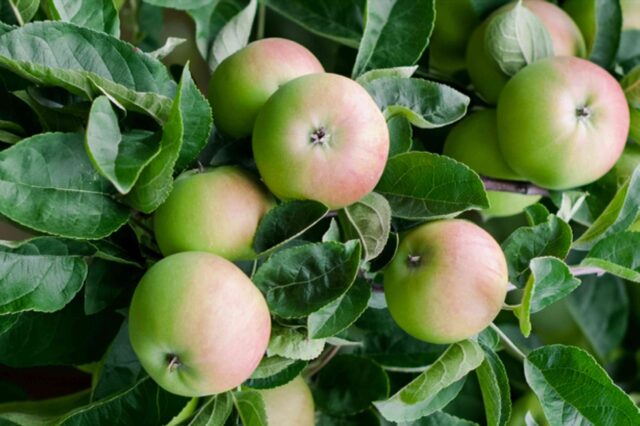Pruning an apple tree is a time-honored tradition that has been passed down through generations. From the novice grower to the experienced horticulturist, understanding and mastering the art of pruning can help ensure bountiful harvests for years to come.
But what does it take to prune an apple tree correctly? In this article, we provide tips and techniques on how to properly care for your apple tree to get the most out of your harvest.
With insight from experts in orchard management, you’ll be well-equipped with the information and know-how needed for successful apple tree pruning practices. So read on to learn more about why proper pruning is essential for growing delicious apples!
1. Preparing Your Apple Tree for Pruning
When preparing an apple tree for pruning, the first step is to assess the overall health of the tree. Inspect for any signs of disease or pest infestations that can compromise its growth and productivity.
Remove dead, diseased, and broken branches as well as any crossed branches that will hinder proper air circulation through the canopy.
Also, look out for suckers which are new shoots growing from below ground level and need to be removed before they become a permanent part of your tree’s structure.
This is key in ensuring your apple tree produces quality fruit year after year. Next, you want to identify what type of pruning you will be doing; whether iit’sformative (done annually) or restorative (done occasionally).
Formative pruning involves removing excess foliage to maintain shape and encourage strong branch formation while also keeping trees at a manageable size.
Restorative pruning helps control overgrowth by reducing vigorous sprouts, stimulating fruiting wood production, increasing light penetration throughout canopies, improving airflow between boughs, and thinning out crowded areas so fruit-bearing spurs have room to grow more abundantly each season!
Finally, when it comes time to make cuts on your apple trees use sharp tools such as loppers or shears – don’t try doing this with blunt blades!
Make sure you clean all tools before beginning work since diseases spread easily between plants via contaminated equipment – better safe than sorry!
When making cuts always aim towards outward-facing buds so they get plenty of sun exposure while still providing structural support inside the canopy – this ensures maximum potential yield come harvest time!
Keep in mind that improper cutting can do more harm than good so take care not only when selecting where but how much trimming should occur at any one session too.
2. Understanding the Principles of Pruning
Pruning an apple tree can be a daunting task for even the most experienced of gardeners. It’s essential to understand the principles of pruning, though, to maintain healthy growth and maximize your harvest.
Pruning involves strategically removing branches from the tree to direct its energy into new growth, which will lead to bigger and better apples each season. Proper pruning also encourages a strong branch structure that supports heavy fruit loads without compromising safety or stability.
Before getting started with your project, it’s important to understand some key terms associated with pruning: canopy thinning (removing entire branches), heading back (cutting off part of a branch), renewal pruning (removing several older and weaker stems), and deadwood removal (eliminating dead wood).
Once you have familiarized yourself with these techniques, you must select appropriate tools such as hand shears or loppers depending on the size of your job. Choosing high-quality equipment is key to achieving desired results; poor-quality tools can damage trees unnecessarily or leave them vulnerable to disease and insect infestations.
The next step in mastering apple tree pruning is understanding when exactly it should be done – typically between late fall after leaves have dropped off and early spring before buds begin opening up again – as well as how often.
Generally speaking, light renewal trimming should take place every three years while more intensive cuts are recommended once every five years or so based on individual circumstances like age/size/growth rate/pest control needs, etc.
Keeping notes about what has been done previously makes future tasks easier since you’ll know exactly where things stand when returning year after year!
Finally, don’t forget that proper maintenance requires continual monitoring throughout growing seasons – make sure all cuts are cleanly made at a 45-degree angle away from bud eyes within 1 inch above them & never leave any jagged edges behind!
3. Selecting and Using the Right Tools
When it comes to pruning apple trees, having the right tools is essential. Pruners, loppers, and saws are just a few of the items you will need to get started.
YYou’llalso wants to make sure that your tools are sharp and in good condition so that they can make clean cuts on branches without damaging them.
Additionally, choosing the right type of tool for each job is important – pruners are best used for small branches while loppers or saws should be used when tackling larger ones.
Understanding how much force you should use when cutting is also critical; too much pressure can cause damage while not enough won’t cut through wood effectively. To ensure optimal results, take time to familiarize yourself with each tool before beginning your project.
Conclusion
In conclusion, mastering the art of apple tree pruning requires a great deal of knowledge and experience. It is essential to understand how trees will react to different types of pruning before starting any project so that you can maximize your harvest.
Pruning should be done with precision, as it has both short-term and long-term effects on the health and productivity of your apple tree.
With careful planning and knowledgeable execution, you can ensure that your apple tree produces an abundant yield for years to come!
